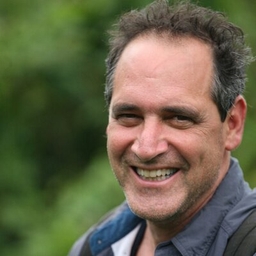
Jon Cohen
Staff Writer at Science Magazine
Science magazine staff writer on infectious diseases, outbreaks, immunology, vaccines, global health, genomics, CRISPR, surfing. Views mine. @[email protected]
Articles
-
5 days ago |
blog.sciencenet.cn | Nala Rogers |Jon Cohen |Nazeefa Ahmed |Mitch Leslie
Weekly Headlines (Excerpts)1. Culture literally changes how we see the worldWhere city dwellers see rectangles, people who live in round huts see circles 20 Jun 2025 By Nala Rogers2. Always ‘one atom away’: The long, rocky journey to an HIV prevention breakthroughDeveloping lenacapavir, the drug newly approved to protect against HIV for six months in one shot, took basic science, sophisticated chemistry, and perseverance 20 Jun 2025 By Jon Cohen3.
-
1 week ago |
science.org | Jon Cohen
To many, it is the next best thing to an HIV vaccine. On Wednesday, the U.S. Food and Drug Administration (FDA) approved a new way to prevent HIV infection: the antiretroviral drug lenacapavir, which provides almost complete protection for 6 months with a single injection in the abdomen. Global health officials think the drug might help quell the tide of new HIV infections, still more than 1 million around the world each year.
-
3 weeks ago |
science.org | Jon Cohen
Even as mpox continues to spread in Africa, recently gaining a serious foothold in Sierra Leone, vaccination efforts are falling far short, imperiling efforts to control the debilitating and sometimes fatal disease. “It is a difficult time,” says Yap Boum, who leads the mpox response for the Africa Centres for Disease Control and Prevention (Africa CDC).
-
3 weeks ago |
science.org | Jon Cohen |Meredith Wadman
Documents released late last week are providing new details about the breadth and depth of the spending cuts the White House is asking Congress to make to public health and biomedical research programs in the 2026 fiscal year that begins on 1 October. Among other things, the plans call for deeper spending and staff cuts at the Centers for Disease Control and Prevention (CDC) than were outlined in a less detailed “skinny budget” that President Donald Trump’s administration released last month.
-
4 weeks ago |
science.org | Jon Cohen
In a move that could bring future research on HIV vaccines to a near halt, the National Institute of Allergy and Infectious Diseases (NIAID) notified researchers today that it will not renew funding next year for two major consortia in the beleaguered field, Science has learned. NIAID also recently stopped funding three research groups that evaluate experimental vaccines in monkeys.
Try JournoFinder For Free
Search and contact over 1M+ journalist profiles, browse 100M+ articles, and unlock powerful PR tools.
Start Your 7-Day Free Trial →Coverage map
X (formerly Twitter)
- Followers
- 41K
- Tweets
- 3K
- DMs Open
- Yes

Here's the kind of problem you want to have: Uganda's Ebola cases are dwindling thanks to aggressive containment efforts, but success complicates plans for a rapidly organized trial to do first read-world test of vaccines against Sudan ebolavirus. https://t.co/6dKwPvkLCs https://t.co/MEkoszRzFK

Ask @SetteLab. I'm not aware of any compelling evidence that SARS-CoV-2 depletion of T or B cells has any significant, longterm impact on the immune system's ability to replace them. SRCV2 doesn't target immune cells, and it's not HIV.

@thilogross @manlius84 @DirkBrockmann @sciencecohen and/or @angie_rasmussen might know if there's any evidence for this.

As story explains, this isn't all-or-nothing phenomenon. “I think of interference as a small push,” says Aubree Gordon....“It depends on population immunity and when that virus last circulated and flu and COVID vaccination rates.” But interference is a real phenomenon.

@Ivriniel @OrangeInvasion @Aaron_Derfel @EricTopol @ScienceMagazine @sciencecohen @CovidEcoles Yep. México City just hosted a 100k pple music fest during 3 consecutive days. And the reports of respiratory symptons are flooding twitter. Here is a coinfection (Influenzavirus + COVID) that emerged from there. https://t.co/CaNM0Ss18q